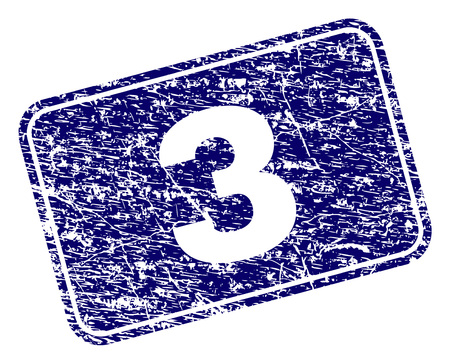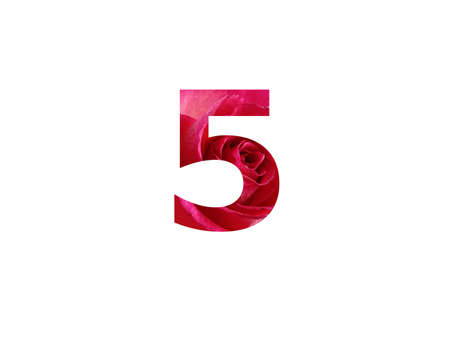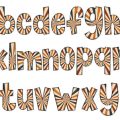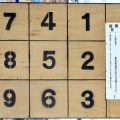Foundations of British History and Folklore
British history and folklore are inextricably linked, each shaping the other across centuries of cultural evolution. To understand the unique identity of Britain, it is essential to explore how foundational historical events—such as the Norman Conquest, the establishment of Magna Carta, or the formation of the United Kingdom—interact with the nation’s rich tradition of myths, legends, and oral storytelling. These narratives are not simply relics of a bygone era; they actively contribute to a collective sense of belonging and national character. From tales of King Arthur and Robin Hood to superstitions about standing stones and enchanted forests, folklore often reflects both localised experiences and broader historical realities. This interplay has allowed communities to interpret their past through symbolic stories, embedding deeper meanings into everyday life and national rituals. As a result, the fusion of fact and fable in British culture provides fertile ground for understanding how traditions evolve, persist, and occasionally resurface in modern contexts. By examining these intertwining roots, we gain insight into the ways shared stories reinforce values, legitimise authority, and ultimately shape what it means to be British.
2. Numerology in British Culture
Numerology has held a curious yet persistent presence within British culture, weaving its way through centuries of literature, superstition, and daily life. While not always overtly discussed as a formal system, the influence of numbers is evident in the ways Britons have interpreted luck, fate, and meaning. From medieval times to the present day, certain numbers have carried significance—sometimes revered, sometimes feared—shaping decisions both great and small.
The Historical Roots of Numerological Belief
British fascination with numerology can be traced back to the arrival of Pythagorean thought during the medieval period, when scholars and mystics alike explored the mystical properties of numbers. This was further reinforced by Christian symbolism, where numbers like three (the Trinity) or seven (perfection) gained spiritual weight. Over time, these ideas permeated local folklore and daily rituals.
Superstition and Everyday Practice
Many traditional British superstitions revolve around numbers. For instance, the number thirteen has long been associated with misfortune—a belief that persists today in many homes and public buildings omitting a “13th” floor or house number. Conversely, seven is often seen as lucky. These beliefs manifest in everything from wedding dates to betting on horse races, where numerology quietly guides choices.
Numerology in Literature and Popular Culture
British writers have frequently embedded numerological motifs within their works. Shakespeare’s plays are replete with references to fateful numbers; Dickens uses them to set moods or foreshadow events. In more recent times, J.K. Rowling’s Harry Potter series draws on magical numbers—such as seven for powerful spells or three for pivotal characters—reflecting an ongoing cultural resonance.
Common Numerological Associations in Britain
| Number | Cultural Significance | Examples in British Context |
|---|---|---|
| 3 | Spiritual unity, completeness | The Three Graces; “third time lucky” saying |
| 7 | Lucky, perfection, mysticism | Seven hills of Edinburgh; “lucky number seven” at races |
| 9 | Endings and renewal | Nine Lessons and Carols service at Christmas |
| 13 | Unlucky, foreboding | No 13th floor in hotels; avoidance in lottery draws |
| 40 | A period of testing or trial | Lent’s forty days; “forty winks” for a short nap |
This enduring interplay between numbers and meaning reveals much about British society’s relationship with tradition and belief. While modern scepticism may downplay overt numerology, echoes remain embedded in language, custom, and imagination—testament to a unique intersection of history and folklore shaped by the subtle power of numbers.

3. Legendary Figures and Symbolic Numbers
Throughout British history and folklore, certain legendary figures are inextricably linked with symbolic numbers, which often serve to amplify their mythos and cultural significance. One of the most renowned examples is King Arthur, a central figure in British legend whose narrative is peppered with numerical motifs. The number seven, for instance, emerges repeatedly within Arthurian tales—seven knights, seven quests, and even the seven years Arthur is said to have reigned in peace before conflict arose. Such repetitions are not mere coincidences; rather, they reflect a deeper tradition in which numbers serve as markers of fate, completeness, and mystical power.
Similarly, the stories surrounding Robin Hood frequently invoke numbers that carry symbolic weight. His band of Merry Men is sometimes listed as numbering twelve or thirteen—paralleling other mythological groups and hinting at themes of unity or rebellion. Meanwhile, the tale of the Seven Sisters in North Yorkshire demonstrates how geography and folklore intertwine: the story of these hills draws upon the mystical qualities attributed to the number seven across Europe, underscoring its role as a harbinger of luck and destiny.
These patterns extend beyond individual tales into broader historical narratives. Monarchs such as Henry VIII—whose six wives are an indelible part of his story—demonstrate how numbers can encapsulate personal legacy as well as national memory. In each instance, symbolic numbers do not merely decorate these stories; they help to structure them, embedding layers of meaning that resonate with audiences across generations. This intersection of numerology with history and folklore illustrates the uniquely British way in which storytelling traditions absorb and reinterpret the abstract language of numbers.
4. Rituals, Customs, and Superstitions
British culture is rich with rituals, customs, and superstitions in which numerology plays a significant role. From the vibrant festivities of May Day to the subtle daily practices that shape British life, numbers are embedded in tradition and belief. A closer look at these practices reveals how numerological concepts have influenced both communal celebrations and private behaviours over centuries.
May Day and the Magic of Numbers
May Day, celebrated on 1st May, marks an ancient festival heralding the arrival of summer. Traditional rituals include dancing around the maypole—a custom often performed by a specific number of dancers (commonly twelve or twenty-four), representing unity and the cyclical nature of seasons. The selection of a May Queen is another example, sometimes guided by local numerological beliefs regarding auspicious dates or ages.
Lucky and Unlucky Numbers in Popular Belief
Numbers such as seven and thirteen feature prominently in British folklore. Seven is often considered lucky, associated with good fortune and mystical protection. In contrast, thirteen carries connotations of misfortune, a superstition that persists in modern Britain—hotels may skip room 13, and some buildings omit the thirteenth floor. The table below summarises common British perceptions of lucky and unlucky numbers:
| Number | Status | Cultural Significance |
|---|---|---|
| 7 | Lucky | Mystical power, good fortune; referenced in “seventh son of a seventh son” folklore |
| 9 | Lucky/Neutral | Associated with completion (e.g., nine lives of a cat) |
| 13 | Unlucky | Linked to bad luck; often avoided in formal settings |
Everyday Customs Shaped by Numerology
The influence of numbers extends into daily life through small but telling rituals: from knocking on wood three times for luck to tossing coins into wells and making wishes at certain numbered milestones (such as the 21st birthday). Even wedding customs reflect numerological thinking—choosing “lucky days” based on old rhymes or avoiding certain dates thought to bring ill fortune.
The Enduring Legacy of Numbers in Tradition
This intersection between tradition and numerology demonstrates how deeply numbers are woven into the fabric of British life. Whether shaping public festivals or private routines, these beliefs continue to offer a sense of order and meaning—a testament to their enduring place within the nation’s cultural landscape.
5. Numerology in British Architecture and Landmarks
In examining the intersection of British history, folklore, and numerology, one cannot overlook the significant role numbers have played in the physical landscape of Britain. From medieval cathedrals to modern urban planning, numerological concepts often permeate the design, construction, and symbolism of iconic buildings and monuments. While some influences are overt, others are subtly embedded within layers of historical tradition and myth.
The Sacred Geometry of Cathedrals
British cathedrals such as Salisbury and Canterbury are renowned not only for their grandeur but also for the mathematical precision and symbolic use of numbers in their architecture. The repeated appearance of numbers like three, seven, and twelve—reflecting religious themes such as the Holy Trinity or the twelve apostles—demonstrates a conscious integration of numerological beliefs. These sacred numbers were believed to imbue structures with spiritual power and harmony, aligning the earthly with the divine.
Stone Circles and Ancient Monuments
The prehistoric stone circles scattered across Britain, most famously Stonehenge and Avebury, offer compelling evidence of early numerological thought. The arrangement and number of stones often correspond to astronomical cycles or calendrical calculations, suggesting that ancient Britons viewed numbers as keys to understanding both time and the cosmos. Folklore surrounding these sites frequently references mystical interpretations of their geometric forms.
Masonic Influence on Urban Planning
The influence of Freemasonry—an organisation deeply invested in symbolic numerology—is evident in elements of British urban planning from the Georgian period onwards. Cities like Bath and parts of London reveal layouts based on geometric principles and recurring numeric patterns, which were intended to project order, stability, and enlightenment values. Streets, squares, and crescents were sometimes designed according to ratios believed to be harmonious or auspicious.
Modern Landmarks: Continuity and Innovation
Even in contemporary times, British architects occasionally draw upon historical numerological motifs. The London Eye’s 32 capsules (symbolising the boroughs), or the Shard’s striking proportions, reflect a continued fascination with encoding meaning into public spaces through number. While the language may be more secular today, the impulse to link numbers with identity and aspiration persists within Britain’s architectural imagination.
Ultimately, whether rooted in sacred geometry or local legend, numerology remains an undercurrent shaping how Britons have envisioned—and continue to shape—their built environment. This ongoing dialogue between number, myth, and place is a testament to the enduring interplay between history, folklore, and symbolic thinking in British culture.
6. Contemporary Resonance
The entwined legacy of British history, folklore, and numerology continues to cast a subtle but persistent influence on modern British culture, media, and public consciousness. Despite the country’s rapid modernisation, numbers imbued with folkloric significance—such as seven for luck or thirteen for misfortune—still surface in everyday conversation and decision-making. Television programmes and films often reference ancient myths or the mystical properties of numbers, weaving them into storylines that resonate with a wide audience. For example, annual traditions like Guy Fawkes Night are not only rooted in historical events but also persist as communal rituals rich in symbolic numerology, marking specific dates with collective memory and meaning.
In the digital era, social media amplifies these old patterns in new forms: viral challenges may hinge on “lucky” or “unlucky” numbers, while online communities revive interest in local legends connected to numerological superstitions. Meanwhile, British designers, writers, and advertisers often play with these themes—whether subtly incorporating historic symbols into branding or using traditional narratives to evoke nostalgia and trust. Even the architectural landscape is shaped by this interplay; buildings might skip a thirteenth floor or feature motifs linked to protective folklore.
This ongoing resonance reflects a deep-seated cultural continuity—a sense that beneath the surface of contemporary British life, the echoes of history, storytelling, and number symbolism continue to shape attitudes and choices. The intersection of these elements offers both comfort and intrigue, reminding modern Britons that their daily experiences are stitched together from layers of shared myth, superstition, and collective memory.


